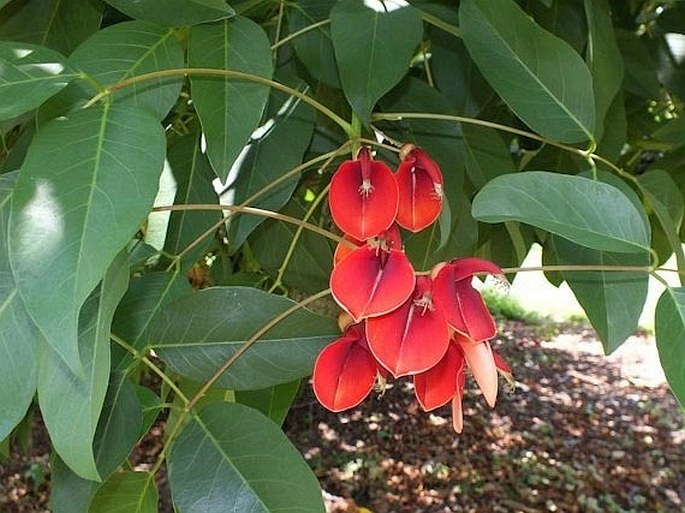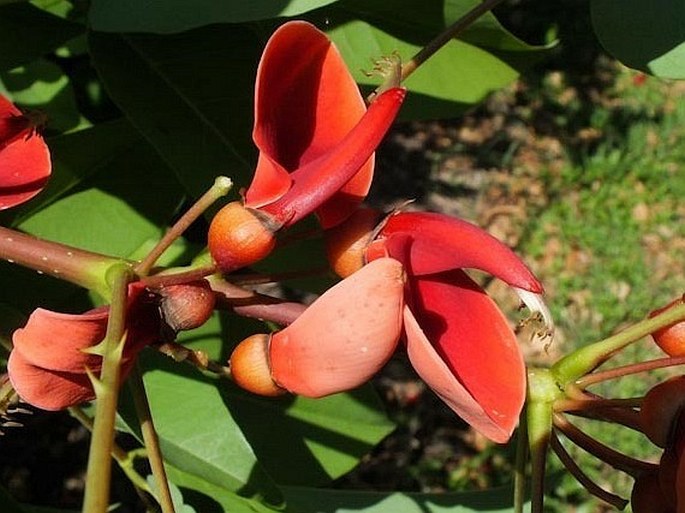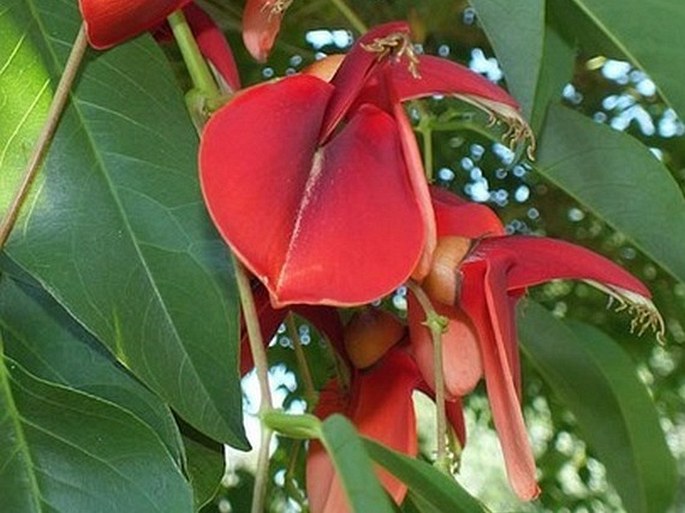Syn.: Corallodendron crista-galli (L.) Kuntze, Micropteryx crista-galli (L.) Walp.
Family: Fabaceae Lindl.

Distribution: Native to South America, in states of Brazil (southern part), Bolivia, northern Argentina, Paraguay and Uruguay. Grown as an ornamental tree in warmer areas of the world. In US, it is found in Georgia, Florida, Mississippi and Louisiana.
Ecology: Wet areas with seasonal inundation, along water streams, margins of woods, up to elevation of about 500 m. Flowering period is in spring and early summer.
Description: Deciduous small tree, 5–9 m tall, crown about equal size to height. Trunk somewhat crooked or multiple, bark furrowed, dark brown. Leaves compound, 3 dark green leaflets, 7–15 cm long, 4–5 cm wide, long petioles, curved thorns on back of leaflets and petioles. Flowers single or in terminal racemes up to 10 in number, 5 cm long, 2.5 cm wide, scarlet red but sometimes pink or red-purple, calyx campanulate, standard with a fold in the middle, longer than down facing keel, wings minuscule, hardly visible from calyx. These flowers in native areas are pollenated by birds with long curved beaks to reach the nectar. Fruit is a legume, about 6 cm long, containing 8–10 reddish brown seeds.
Use: The plant contains alkaloids with powerful narcotic and purgative effects.
Note: This is a national flower of Argentina and Uruguay.




These images were taken in USA, Louisiana, New Orleans, Audubon Park (May 2014).


